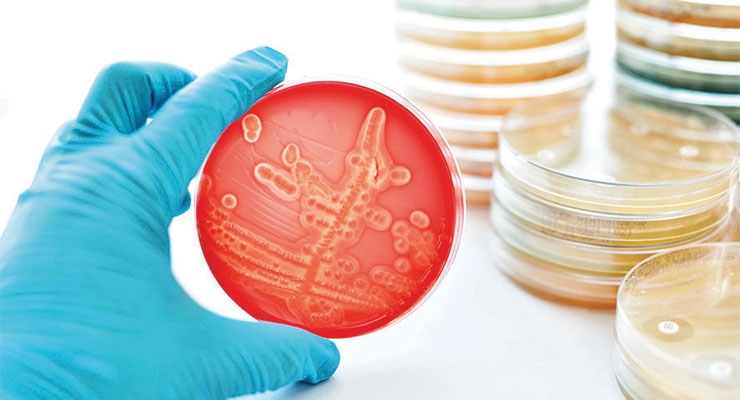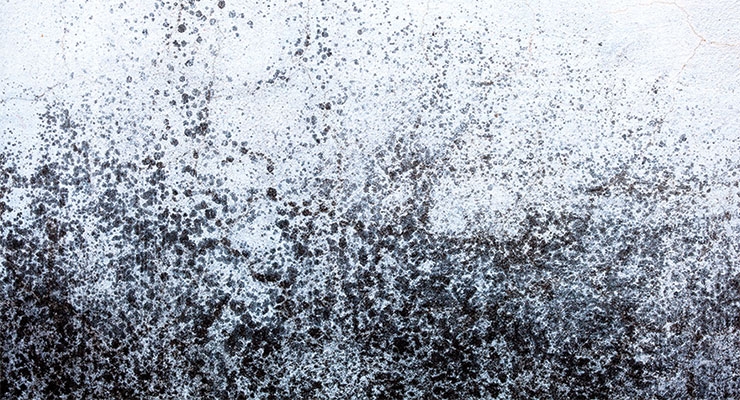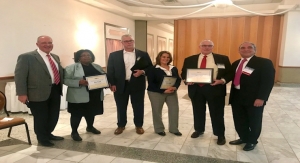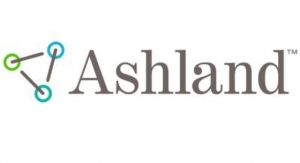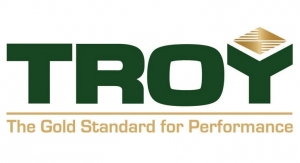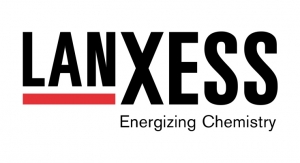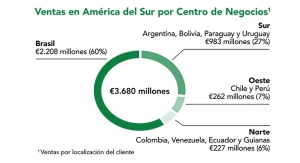Anthony Locicero, Associate Editor12.03.18
Biocides are protective substances used to inhibit the growth of bacteria and other pernicious organisms, including fungi.
The global biocide market could reach $11.9 billion by 2022 – up from $7.9 billion in 2014 – according to Radiant Insights, Inc.
MarketsandMarkets forecasts the market reaching $10.6 billion by 2020.
The demand is likely to be driven by growth in water treatment process units in areas such as China, Japan and India, per Radiant Insights. Growth may also be driven by a growing demand for paints and coatings, which Radiant Insights said is owed to growing infrastructure spending.
“Growth in markets such as Asia, India, the Middle East and Africa have contributed to an increase in demand for biocides in recent years,” said Geoff Clay, senior marketing and communications analyst, Troy Corporation.
The construction industry offers the maximum market potential in the global biocides market, owing to rapid urbanization and favorable macroeconomic factors, according to Allied Market Research, which also cited an increased need for water treatment in various sectors such as household, industrial, and commercial leading to the growth in demand for biocides.
“Urbanization and increased construction, particularly in Asia, continue to drive demand,” SANITIZED Preservation AG CEO David Thierney said. “Regulatory requirements continue to be the number one selection criteria for biocide selection. Linked to this is the transition from solvent- to water-based systems, which is further bolstering demand in most regions.”
“The global increase in demand for biocides is intimately related to the building and construction industry,” said Mauricio Misdrahi, Ph.D., Brenntag North America technical manager. “This demand can be defined in two major areas: Wood preservation and architectural coatings. Wood decking and general pressure-treated wood applications require high levels of biocides. The demand in antimicrobials for architectural coatings could be classified into two large groups: Can preservation and preservation as a film. For the preservation as a film, the use of fungicides and algaecides like carbendazim and s-triazine are significant alternatives. The dosage is recommended depending on the weather, humidity, location, and application.”
“Thomas Swan & Co. Ltd. has seen growing biocide demand in 2018, in particular for consumer antiseptic and antibacterial formulations, for example, anti-bacterial handwashes and other household formulations,” added Jamie Rutherford, business manager – personal, household care & leather, Thomas Swan & Co. Ltd. “Much of the volume growth is outside of traditional mature markets. Growing disposable income in southeastern Asian economies, in particular, is driving high demand.”
Thierney reported continued growth in Asia Pacific.
“The demand for biocides fluctuates and we could say that it is divided into Europe, emerging countries and Asia,” Misdrahi said. “However, we estimate the annual growth of biocides is in the order of two to three percent.
“Europe presents similar growth numbers as the U.S.,” Misdrahi continued. “The growth of emerging countries jumps with an annual range of three to four percent. The exception is China with annual average growth above 5.5 percent.”
Misdrahi noted that the North American biocides market is a mature market with few developments of new ingredients.
“The associated costs to research and development and regulatory expense have been a significant barrier to growth and new product development,” Misdrahi said. “The market has oriented to offer similar products with the same chemical composition driven by the expiration of relevant patents. The effect has been decreased prices and margins.”
Many companies have to comply with the EU’s REACH legislation.
“Regardless of geography, effective biocides and safe, economical protection of coatings from microbial growth will always be in demand – although the nature of these products continues to change,” Clay said. “The influence of regulatory legislation worldwide is greater than ever, forcing suppliers and manufacturers alike to achieve the same objectives with a shorter list of available active chemistries.
“A recent example of this was the legislation away from MIT, common active chemistry used in wet-state preservation, in Europe,” he added. “Also this year, supply issues with BIT, another common active chemistry used in wet-state preservation, forced the industry to look for effective alternatives.”
“One significant market concern relative to the use of biocides is safety, stewardship and handling, and increasing regulatory pressure,” Misdrahi said.
What do customers expect in terms of performance/environmental compliance? The answers varied.
“Typically, customers are looking for external paints to maintain their integrity for 5-10 years,” Thierney said. “Increasingly, we are also seeing interest in antimicrobial coatings for internal use in both institutional and domestic environments.”
“Customers are looking for versatile, broad-spectrum biocides with good toxicological profiles, biodegradability, all while being colorless and odorless and low VOC,” Misdrahi said. “Customers are looking to improve resistance to solar radiation and chemical stability in the paint, as well as permanency at varying temperatures and pH ranges. Environmental and safety regulations require disclosure of heavy metal content – low is desired – and impurities. Formaldehyde levels are under heavy scrutiny, and are banned in many areas, and require alternative biocidal chemistry to replace formaldehyde containing biocides.”
“Troy’s customers continue to look for performance, value, compliance, and sustainability,” Clay said. “Manufacturers are accustomed to doing business in a highly competitive marketplace. As a result, they look to Troy for the latest technology that will give them the edge over their competition.
In the past 12 months, SANITIZED AG has developed a new range of products for in-can, dry film and antimicrobial protection of architectural paints, according to the CEO.
“These have been formulated to maximize performance, whilst taking into account environmental and personal safety considerations,” Thierney said.
2018 “has all been about maintaining production and is a reflection of continued high demand,” according to Rutherford.
SANITIZED Preservation AG is a new subsidiary of SANITIZED AG formed in April 2018.
“This new entity benefits from the core microbiology, regulatory, formulation, and marketing competencies of the Sanitized AG group and is well positioned to support our customers in the paint industry as criteria for biocide selection undergo a period of change,” he added.
Troy recently expanded its manufacturing facilities in Southeast Asia, “significantly” increasing production capacity, Clay noted. The company also produced new preservatives along with an advanced, low-leaching fungicide and algaecide.
The global biocide market could reach $11.9 billion by 2022 – up from $7.9 billion in 2014 – according to Radiant Insights, Inc.
MarketsandMarkets forecasts the market reaching $10.6 billion by 2020.
The demand is likely to be driven by growth in water treatment process units in areas such as China, Japan and India, per Radiant Insights. Growth may also be driven by a growing demand for paints and coatings, which Radiant Insights said is owed to growing infrastructure spending.
“Growth in markets such as Asia, India, the Middle East and Africa have contributed to an increase in demand for biocides in recent years,” said Geoff Clay, senior marketing and communications analyst, Troy Corporation.
The construction industry offers the maximum market potential in the global biocides market, owing to rapid urbanization and favorable macroeconomic factors, according to Allied Market Research, which also cited an increased need for water treatment in various sectors such as household, industrial, and commercial leading to the growth in demand for biocides.
“Urbanization and increased construction, particularly in Asia, continue to drive demand,” SANITIZED Preservation AG CEO David Thierney said. “Regulatory requirements continue to be the number one selection criteria for biocide selection. Linked to this is the transition from solvent- to water-based systems, which is further bolstering demand in most regions.”
“The global increase in demand for biocides is intimately related to the building and construction industry,” said Mauricio Misdrahi, Ph.D., Brenntag North America technical manager. “This demand can be defined in two major areas: Wood preservation and architectural coatings. Wood decking and general pressure-treated wood applications require high levels of biocides. The demand in antimicrobials for architectural coatings could be classified into two large groups: Can preservation and preservation as a film. For the preservation as a film, the use of fungicides and algaecides like carbendazim and s-triazine are significant alternatives. The dosage is recommended depending on the weather, humidity, location, and application.”
“Thomas Swan & Co. Ltd. has seen growing biocide demand in 2018, in particular for consumer antiseptic and antibacterial formulations, for example, anti-bacterial handwashes and other household formulations,” added Jamie Rutherford, business manager – personal, household care & leather, Thomas Swan & Co. Ltd. “Much of the volume growth is outside of traditional mature markets. Growing disposable income in southeastern Asian economies, in particular, is driving high demand.”
Thierney reported continued growth in Asia Pacific.
“The demand for biocides fluctuates and we could say that it is divided into Europe, emerging countries and Asia,” Misdrahi said. “However, we estimate the annual growth of biocides is in the order of two to three percent.
“Europe presents similar growth numbers as the U.S.,” Misdrahi continued. “The growth of emerging countries jumps with an annual range of three to four percent. The exception is China with annual average growth above 5.5 percent.”
Misdrahi noted that the North American biocides market is a mature market with few developments of new ingredients.
“The associated costs to research and development and regulatory expense have been a significant barrier to growth and new product development,” Misdrahi said. “The market has oriented to offer similar products with the same chemical composition driven by the expiration of relevant patents. The effect has been decreased prices and margins.”
Many companies have to comply with the EU’s REACH legislation.
“Regardless of geography, effective biocides and safe, economical protection of coatings from microbial growth will always be in demand – although the nature of these products continues to change,” Clay said. “The influence of regulatory legislation worldwide is greater than ever, forcing suppliers and manufacturers alike to achieve the same objectives with a shorter list of available active chemistries.
“A recent example of this was the legislation away from MIT, common active chemistry used in wet-state preservation, in Europe,” he added. “Also this year, supply issues with BIT, another common active chemistry used in wet-state preservation, forced the industry to look for effective alternatives.”
“One significant market concern relative to the use of biocides is safety, stewardship and handling, and increasing regulatory pressure,” Misdrahi said.
What do customers expect in terms of performance/environmental compliance? The answers varied.
“Typically, customers are looking for external paints to maintain their integrity for 5-10 years,” Thierney said. “Increasingly, we are also seeing interest in antimicrobial coatings for internal use in both institutional and domestic environments.”
“Customers are looking for versatile, broad-spectrum biocides with good toxicological profiles, biodegradability, all while being colorless and odorless and low VOC,” Misdrahi said. “Customers are looking to improve resistance to solar radiation and chemical stability in the paint, as well as permanency at varying temperatures and pH ranges. Environmental and safety regulations require disclosure of heavy metal content – low is desired – and impurities. Formaldehyde levels are under heavy scrutiny, and are banned in many areas, and require alternative biocidal chemistry to replace formaldehyde containing biocides.”
“Troy’s customers continue to look for performance, value, compliance, and sustainability,” Clay said. “Manufacturers are accustomed to doing business in a highly competitive marketplace. As a result, they look to Troy for the latest technology that will give them the edge over their competition.
In the past 12 months, SANITIZED AG has developed a new range of products for in-can, dry film and antimicrobial protection of architectural paints, according to the CEO.
“These have been formulated to maximize performance, whilst taking into account environmental and personal safety considerations,” Thierney said.
2018 “has all been about maintaining production and is a reflection of continued high demand,” according to Rutherford.
SANITIZED Preservation AG is a new subsidiary of SANITIZED AG formed in April 2018.
“This new entity benefits from the core microbiology, regulatory, formulation, and marketing competencies of the Sanitized AG group and is well positioned to support our customers in the paint industry as criteria for biocide selection undergo a period of change,” he added.
Troy recently expanded its manufacturing facilities in Southeast Asia, “significantly” increasing production capacity, Clay noted. The company also produced new preservatives along with an advanced, low-leaching fungicide and algaecide.

